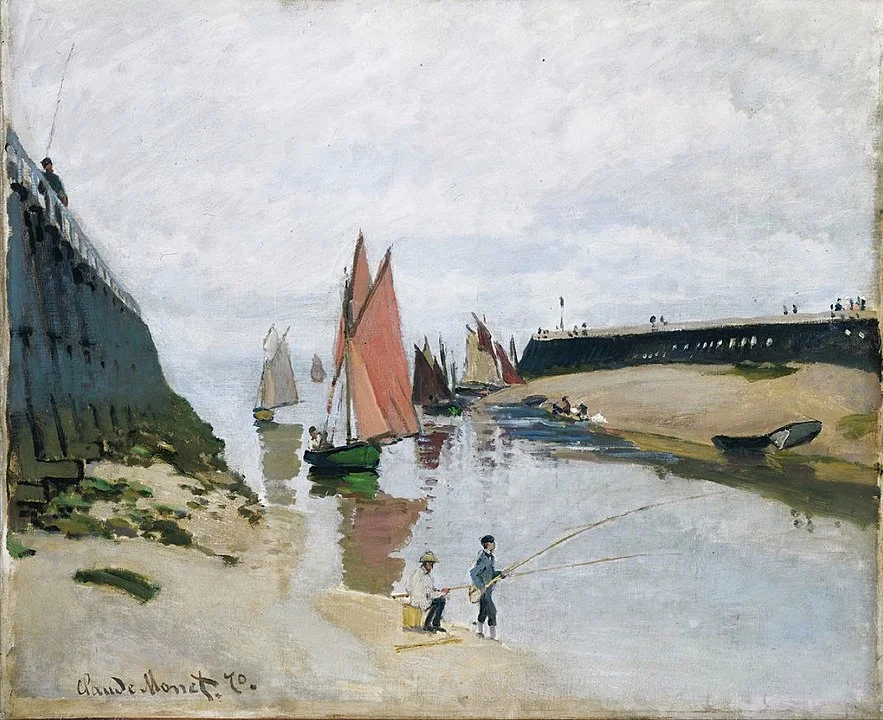Harmonizing Hues - Monet's Brushstrokes Unveiled in a Symphony of Nature's Colours
In the realm of art, Claude Monet stands as a maestro, creating a symphony of nature's colours through his iconic brushstrokes. Join us on an enlightening journey through Monet's world, exploring the secrets behind his masterpiece paintings.

Monet's Brushstrokes - Capturing Nature's Essence
Claude Monet, the pioneer of Impressionism, redefined art by capturing the ever-changing beauty of nature on canvas. His unique technique transformed the ordinary into the extraordinary, breathing life into each stroke.
Explore Monet's Unique Technique
Monet's brushstrokes were more than mere paint on canvas; they were a dance with nature. His revolutionary approach involved capturing the essence of a scene rather than its details. Each stroke represented a moment, a feeling, a play of light and color.
Unravelling the Magic
Let's journey through some of Monet's most iconic paintings, such as "Water Lilies," "Sunrise," and "Haystacks." Discover the meticulous details and the ingenious use of colour that brought these masterpieces to life. Monet's ability to infuse movement and emotion into static images remains unparalleled.

Translating the Beauty of the World
Monet's genius lay in his ability to translate the beauty of the world into vibrant, living art. His keen observation of nature, combined with a revolutionary technique, allowed him to create timeless masterpieces that continue to captivate audiences worldwide.
A Brushstroke-by-Brushstroke Exploration
Let's take a closer look at Monet's masterpiece, "View at Rouelles, Le Havre 1858." In this early work, the influence of Corot, Sainte-Adress, and Courbet is evident. The brushstrokes delicately capture the tranquillity of the scene, offering a glimpse into the artist's evolving style.

Monet's Legacy - Inspiring Generations
Monet's influence extends far beyond his lifetime. His legacy inspires artists, art enthusiasts, and nature lovers alike. The exploration of his brushstrokes provides not only a visual feast but also a deeper understanding of the connection between art and the natural world.
Capturing Nature's Essence in "Water Lilies"
Monet's renowned series of "Water Lilies" exemplifies his mastery. The brushstrokes delicately depict the reflection of water, the dance of light on the pond's surface, and the vibrant hues of the floating lilies. Each stroke seems to ripple with the movement of nature itself.
The Radiant Dawn in "Sunrise"
In "Sunrise," Monet's use of warm hues and bold brushstrokes creates a breath-taking scene. The sun emerges over the horizon, and the brushstrokes brilliantly capture the fleeting moments of dawn, evoking a sense of tranquillity and wonder.
Frequently Asked Questions:
Q: What is unique about Monet's brushstroke technique?
A: Monet's brushstroke technique involved capturing the essence of a scene rather than its details. His strokes were a dance with nature, representing moments, feelings, and the interplay of light and color.
Q: Which are Monet's most iconic paintings?
A: Some of Monet's most iconic paintings include "Water Lilies," "Sunrise," "Haystacks," and "View at Rouelles, Le Havre 1858."
Q: How did Monet translate the beauty of the world onto canvas?
A: Monet's keen observation of nature, combined with a revolutionary technique, allowed him to infuse movement and emotion into static images, creating vibrant, living art.
Q: What is the legacy of Monet's brushstrokes?
A: Monet's legacy extends to inspiring generations of artists, art enthusiasts, and nature lovers. His brushstrokes offer a deeper connection between art and the natural world.
Q: What is the significance of Monet's "Water Lilies" series?
A: Monet's "Water Lilies" series is significant for its masterful depiction of light, water, and nature. The series is a visual poem, capturing the essence of tranquillity and beauty.
Q: How did Monet's brushstrokes influence the Impressionist movement?
A: Monet's brushstroke technique, focused on capturing the essence of a scene, was foundational to the Impressionist movement. It emphasized the artist's subjective experience and paved the way for a new era in art.
Q: Which museums showcase Monet's most celebrated works?
A: Monet's masterpieces can be admired at renowned museums such as the Musée d'Orsay in Paris, the Metropolitan Museum of Art in New York, and the Musée Marmottan Monet in Paris.

Conclusion:
Monet's brushstrokes are a symphony of nature's colours, a harmonious blend of light, movement, and emotion. Each stroke tells a story, and each painting is a testament to the artist's profound connection with the natural world. As we explore Monet's brushstrokes, we embark on a journey that transcends time, inviting us to see the world through the eyes of a true artistic genius.
Embark on your own exploration of Monet's brushstrokes, and let the canvas unfold the enchanting symphony of nature's colours before you.
Read more about Claude Monet
Monet's Gardens - A Glimpse into the Artist's Muse
Step into Monet's Gardens, where flora meets artistry. Explore the muse behind the masterpieces in this captivating journey.
Artist Claude Monet
Explore Claude Monet's timeless artistry, where strokes of brilliance meet the beauty of nature. Discover the essence of a master painter's legacy.
Drawing Class - 9821920746
























